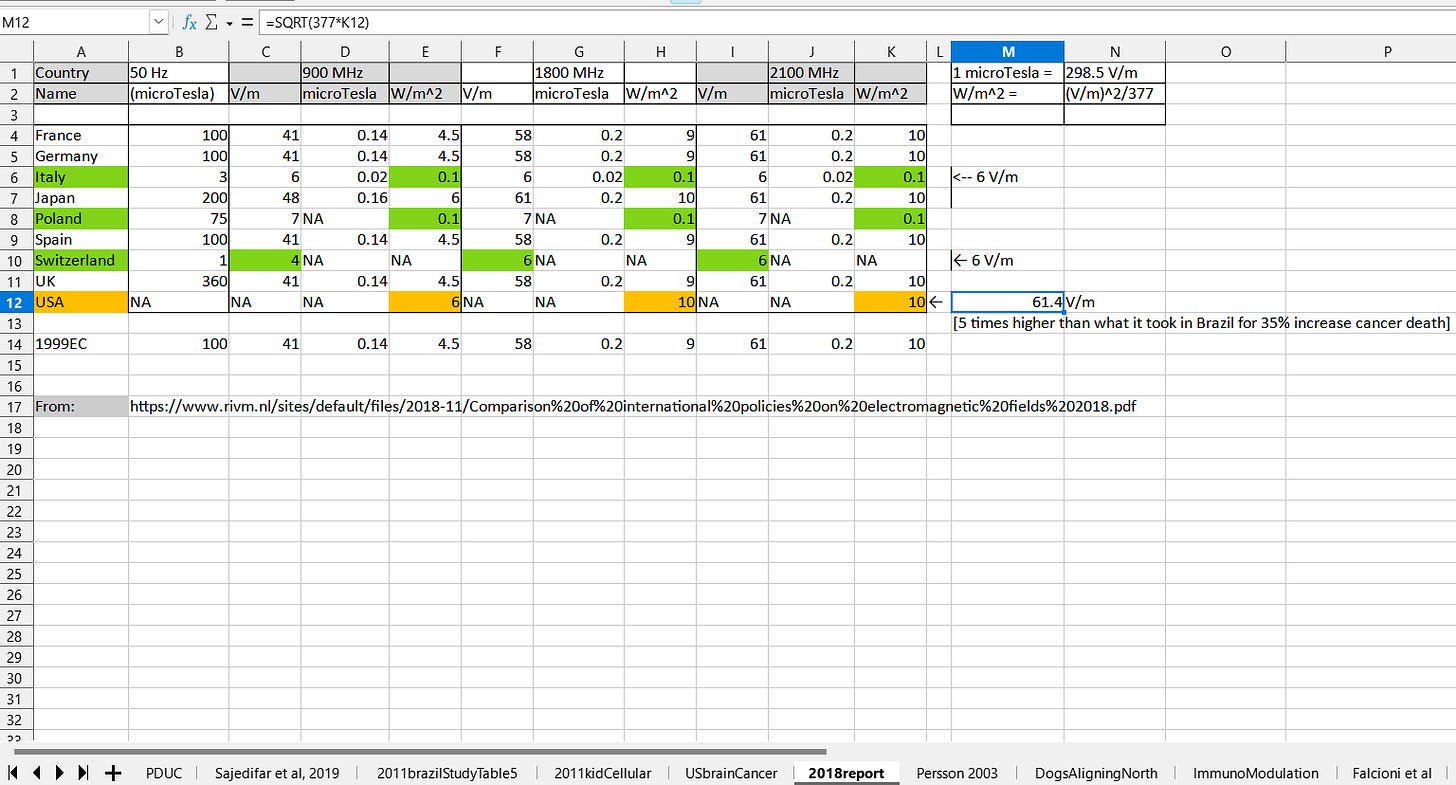Electro-smog is a short-hand term for radiation from the electromagnetic field (EMF) of wireless devices, and it is a type of unseen pollution. Because different nations have different limits set for the amount of electro-smog allowed in public places, it can help to check if the different limits are associated with differing levels of harm.
One expected harm from exposure to electro-smog is neurologic harm, such as neuro-degenerative diseases like Parkinson’s Disease and Multiple Sclerosis, as well as Alzheimer’s Disease and related dementia. When the death rate from such diseases among those of age 55-74 is tracked over time, there are indeed notable differences:
Can you guess which 3 of these 7 nations have the most strict and legally binding policies regarding electro-smog?
If you guessed France, Italy, and Spain, you are correct. Only in those 3 nations did the neurologic mortality rate either fall or remain relatively stable. In the other 4 nations — where the policy on electro-smog is more lax — large increases in the age-specific mortality rate from neurologic disease is noted.
Beyond how binding the regulations are (most binding in France, Italy, and Spain), here are selected exposure limits on 4 kinds of electromagnetic radiation:
Notice how, in the USA, the reference limit is at least 10 times higher than in Italy, Poland, or Switzerland. Switzerland had the most strict limit on the electric field strength of 900 MHz radiation in public places where people are expected to spend 4 hours or more:
4 Volts per meter (4 V/m)
That electric field strength corresponds to less than 0.1 Watt per square-meter. The computed field strength allowed in the USA was 61.4 V/m — almost five times higher than the 12.4 V/m level that was associated with a 35% increase in cancer deaths in Brazil.
These preliminary results indicate that, if efforts are in place to reduce electro-smog, then the rate of neurologic mortality does not steeply rise, but if higher levels of electro-smog are allowed, then the rate of neurologic mortality rises steeply — by up to 40% per decade (up to 60% over the short course of just 15 years).
Reference
Wyszkowska J, Pritchard C. Open Questions on the Electromagnetic Field Contribution to the Risk of Neurodegenerative Diseases. Int J Environ Res Public Health. 2022 Dec 2;19(23):16150. doi: 10.3390/ijerph192316150. PMID: 36498223; PMCID: PMC9738318. https://www.ncbi.nlm.nih.gov/pmc/articles/PMC9738318/
Dode AC, Leão MM, Tejo Fde A, Gomes AC, Dode DC, Dode MC, Moreira CW, Condessa VA, Albinatti C, Caiaffa WT. Mortality by neoplasia and cellular telephone base stations in the Belo Horizonte municipality, Minas Gerais state, Brazil. Sci Total Environ. 2011 Sep 1;409(19):3649-65. doi: 10.1016/j.scitotenv.2011.05.051. Epub 2011 Jul 13. PMID: 21741680. https://pubmed.ncbi.nlm.nih.gov/21741680/
Comparison of international policies on electromagnetic fields (power frequency and radiofrequency fields). National Institute for Public Health and the Environment, RIVM PO Box 1 | 3720 BA Bilthoven he Netherlands. https://www.rivm.nl/sites/default/files/2018-11/Comparison%20of%20international%20policies%20on%20electromagnetic%20fields%202018.pdf



